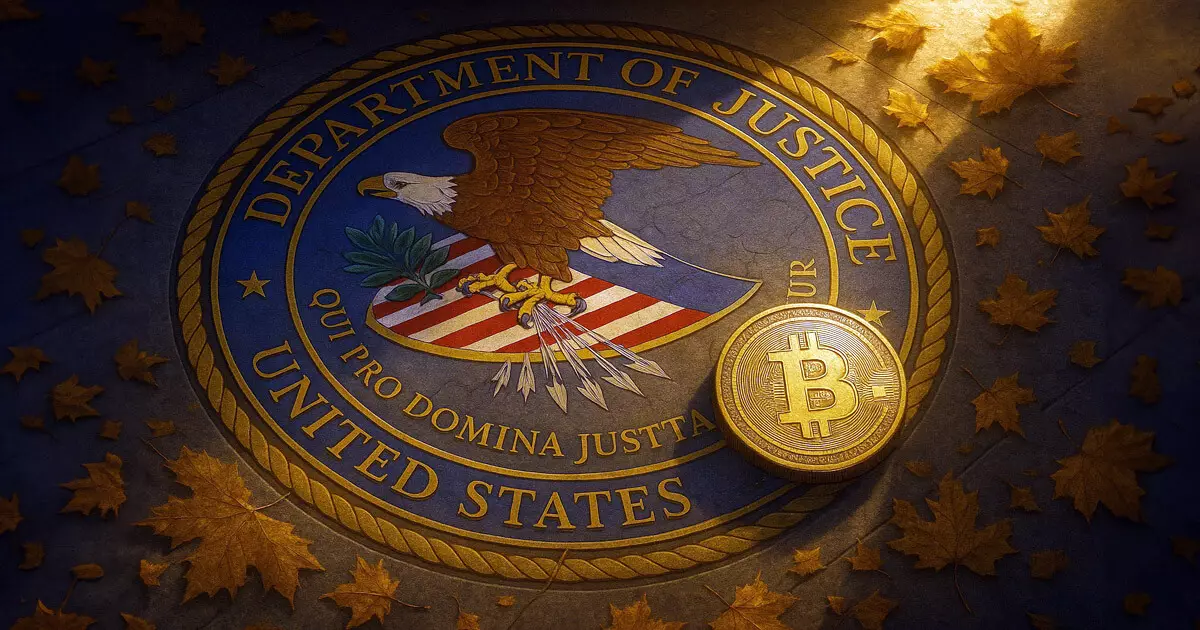In a world increasingly dependent on technology, the digital asset landscape has emerged as both a frontier for innovation and a breeding ground for fraud. The recent move by the US Department of Justice (DOJ) to review compensation methods for victims of digital asset fraud is commendable, yet reflects deep-rooted challenges that remain unresolved. Many victims of high-profile collapses like FTX and Celsius find themselves facing an uphill battle, receiving reimbursements calculated based on antiquated values at the time of their claims rather than the market’s current reality. This misguided approach not only overlooks the dynamic nature of cryptocurrencies but directly undermines the financial rights of defrauded investors.
Old Valuations in a New Age
One would assume that a government agency tasked with upholding justice would adapt its approach to the rapidly changing landscape of technology. Instead, the DOJ seems tethered to outdated practices that value holdings based on a snapshot in time rather than a continually shifting market. For instance, when FTX filed for bankruptcy in late 2022, Bitcoin lingered below $20,000. Fast forward to a speculative 2025, where projections suggest Bitcoin might soar above $108,000, and it becomes clear that those seeking redress are getting a raw deal. It feels preposterous that the system can’t account for the exponential gains that victims could have realized had they been able to hold onto their assets, which were robbed from them through theft or fraud.
A Broken Promise of Justice
The Department of Justice’s internal memo signifies an awakening to the plight of investors, yet the memo also highlights systemic flaws that cause more harm than good. By limiting recovery to the dollar value at the time of the crime, the existing regulations place all the risk squarely on the shoulders of the victims while leaving perpetrators unscathed from their fiscal mismanagement. This is disturbing on multiple levels—first, it perpetuates a system where fraud can be profitable, and secondly, it casts a shadow of doubt on the commitment of the DOJ to genuinely protect investors. The discrepancies in loss recovery threaten to entrench a culture of impunity within the digital asset space, allowing fraudsters to capitalize on existing loopholes.
Legal Recognition: A Long Overdue Necessity
As advocates like Mr. Purple, a voice for FTX creditors, have pointed out, digital assets require legal recognition similar to traditional financial instruments under bankruptcy law. This isn’t just a technicality; it’s an acknowledgment of the changing fundamentals of money and investment in the 21st century. Failure to align regulations with the realities of digital assets sends a message: that the law is ill-equipped to handle the complexities of modern finance. This is unacceptable for a nation that prides itself on leading the world in innovation and entrepreneurship.
Reforms on the Horizon?
While the DOJ’s mandate to assess regulatory and legislative updates can be seen as a positive sign, skepticism lingers. The promise of reforms to the bankruptcy code aimed at recognizing the unique characteristics of digital assets is contingent upon institutional momentum and political will. Given the sluggish pace of legislative processes, one can’t help but wonder whether this initiative is merely an exercise in optics rather than a commitment to substantial change.
A Shift in Priorities or Just Distraction?
The abrupt disbanding of the National Cryptocurrency Enforcement Team (NCET), which initially sought to focus on crypto-related crimes, raises eyebrows. While the DOJ insists it will redirect efforts to focus on egregious crimes like scams and market manipulation, the fear persists that this may dilute necessary scrutiny over potentially lawful entities within the crypto ecosystem. The disbanding may make it easier for predatory practices to thrive unchecked, negating any potential progress in investor protection.
As the DOJ aligns itself with President Trump’s Working Group on Digital Asset Markets, it faces the challenge of reconciling robust consumer protections with the growth of an industry still in its infancy. The outcome of this political engagement will determine whether justice prevails for victims of digital asset fraud or if they continue to pay the price for regulatory shortcomings.

